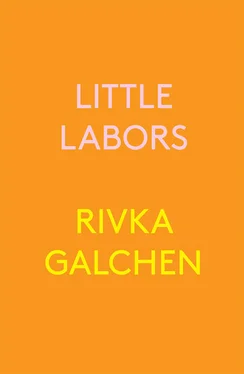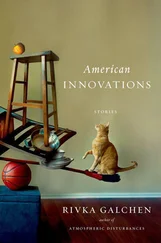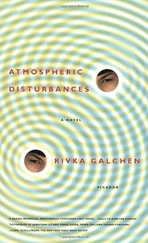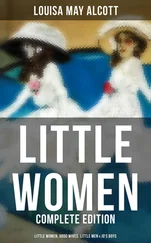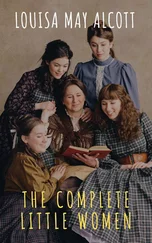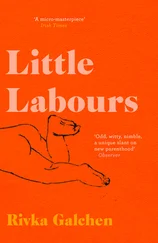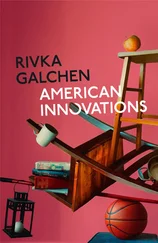Rivka Galchen - Little Labors
Здесь есть возможность читать онлайн «Rivka Galchen - Little Labors» весь текст электронной книги совершенно бесплатно (целиком полную версию без сокращений). В некоторых случаях можно слушать аудио, скачать через торрент в формате fb2 и присутствует краткое содержание. Год выпуска: 2016, Издательство: New Directions, Жанр: Публицистика, Критика, на английском языке. Описание произведения, (предисловие) а так же отзывы посетителей доступны на портале библиотеки ЛибКат.
- Название:Little Labors
- Автор:
- Издательство:New Directions
- Жанр:
- Год:2016
- ISBN:нет данных
- Рейтинг книги:5 / 5. Голосов: 1
-
Избранное:Добавить в избранное
- Отзывы:
-
Ваша оценка:
- 100
- 1
- 2
- 3
- 4
- 5
Little Labors: краткое содержание, описание и аннотация
Предлагаем к чтению аннотацию, описание, краткое содержание или предисловие (зависит от того, что написал сам автор книги «Little Labors»). Если вы не нашли необходимую информацию о книге — напишите в комментариях, мы постараемся отыскать её.
—a key inspiration for Rivka Galchen’s new book — contains a list of “Things That Make One Nervous.” And wouldn’t the blessed event top almost anyone’s list?
Little Labors
Genji
The Pillow Book
Little Labors — atomized and exploratory, conceptually byzantine and freshly forthright — delights.
Little Labors — читать онлайн бесплатно полную книгу (весь текст) целиком
Ниже представлен текст книги, разбитый по страницам. Система сохранения места последней прочитанной страницы, позволяет с удобством читать онлайн бесплатно книгу «Little Labors», без необходимости каждый раз заново искать на чём Вы остановились. Поставьте закладку, и сможете в любой момент перейти на страницу, на которой закончили чтение.
Интервал:
Закладка:
Literature has more dogs than babies
Literature has more dogs than babies, and also more abortions. Most babies who appear in literature are, by paragraph three, already children, if not even adults. But there are a few exceptions. In Beloved by Toni Morrison, a two-year-old baby is murdered by her mother so as to protect the child from a life of slavery, or from life at all, and the baby returns (it seems) as a ghost to haunt her family. A baby is an important character in Margaret Drabble’s 1965 novel of a single mother in academia, The Millstone , albeit the baby appears more as a heavy pendant than as a being. And in Kenzaburo Oe’s A Personal Matter , the narrator’s baby is born with a seemingly deformed brain, extruded from his skull, and the narrator then travels around town with the baby, considers letting the baby die, but doesn’t, considers sailing to Africa, but doesn’t, and finally the narrator returns to the hospital and it turns out that the baby’s deformity was only superficial and easily fixed, the baby is not a monster after all — so who is deformed? and who is a monster? — and the father, there in post — World War II Japan, is celebrated by his in-laws as if the good fortune is a reflection of his good moral character just as earlier his bad fortune was seen to be a reflection of his bad moral character. The novel The Fifth Child by Doris Lessing tells of a family with four children, and the whole family is pretty happy and ideal, even smug, until the catastrophically devilish fifth child is born, who, even as a baby, is terrifying. (Although one begins to notice that nobody other than his family seems to find the fifth child so difficult, or strange, and really the child seems simply not loved, and his only real fault as he grows up seems to be that he is more at ease in a class lower than that of the posh family who can no longer really afford the fantasy of the great house they inhabit.) In some of Lydia Davis’s short stories, a baby often interrupts a thought, or is a thought. In Raymond Carver’s “Feathers,” a couple goes over for dinner to the house of another couple they don’t know well, the house is a mess, there’s a peacock wandering around, indoors, and then the visitors meet the host couple’s baby, a baby about which the couple seem beatifically proud, and a baby who to the narrator is just enormously fat, the ugliest baby he has ever seen; and after witnessing the parents’ love for their ugly baby, that same night the narrator and his wife go home and decide to have a baby themselves, and in the very end of the story we speed forward in time and find out that the man is upset that his wife cut her hair short and his life feels, with the baby, pressed and plain. In Anna Karenina , Tolstoy makes vivid and real both Anna’s and Kitty’s babies. (Tolstoy has also written about the inner life of a dying tree.) In Judy Budnitz’s short-story collection Nice Big American Baby , several of the stories feature babies: one gestated for four years; another dark black though his parents are pale; many, many made by soldiers who are there and then gone. Maybe the most fully realized baby I have ever read appears in the Lorrie Moore story “People Like that Are the Only People Here,” in which the baby is Baby and the father is Husband and the mother is Mother and the oncologist is Oncologist. In Jenny Offill’s Department of Speculation we find a colicky and cherished baby and a breakdown (at least for a bit) of a marriage. I can think of no baby in Shakespeare, unless we count Caliban, which maybe we should. One might say that most babies in literature, when they appear for more than a moment, tend to be catalysts of decay or despair, as surely babies now and again in real life actually are (though literature is always only a convex looking glass, and not even a regularly convex one, more like an especially old and unshined spoon (and definitely a silver one)). So many of the modern written babies seem to have more in common with what are termed in Margaret Atwood’s A Handmaid’s Tale “unbabies” rather than “keepers.” In their monstrous burdensomeness, these babies resemble my very favorite of all depicted babies, that nineteenth-century creature denied even the luxury of an infancy, that poor solitary wretch who on the first day of his life was already over six feet tall, and about whom his creator said, as if in repentance, “The world was to me a secret which I desired to divine.” We’re not to know. Mary Shelley’s Frankenstein is not the infant joy of Coleridge or Blake, instead it is the story of an infant angry about being born at all, a half-rhyme emotionally with the book itself being termed by its mother/author to be her “hideous progeny”—a phrase more sad than flip, as Mary Shelley knew herself to be the progeny whose arrival led to the death of her mother, Mary Wollstonecraft, the vindicator of the rights of women. (And Mary Shelley then had to watch, after writing her book, her first, second, and third child die in infancy.) But if I seem to be wandering into an appraisal of babies — so underrepresented!—as in need of their own subaltern studies then I have wandered too far. We know babies are the only ones among us in alliance with time. They are the only incontestable accessors to power, or, at least, they are immeasurably more well-placed than their elder co-unequals. The way a baby, in a stroller, briefly resembles a fat potentate, for a moment unlovable, has something in it of the premonition. Even as to see a baby raise its chubby hand — to bow down before that random emperor can feel very right.
More Frankenstein
Frankenstein isn’t the name of the monster, it is only the name of the creator of the monster, and the monster himself is never given a name, which contributes to the productive confusion that leads most people, even those who know better, to think of and speak of the creature as “Frankenstein.”
Dr. Frankenstein, the father (and mother) in a sense, notices the creature, shortly after creation, peering over the edge of a bed, like a toddler in his parents’ room. Dr. Frankenstein flees in terror from the sight. The creature is then left on his own. For awhile he hangs out around the house of a family he dreams of belonging to; the head of that family is a blind man; the creature one day gathers the courage to present himself to the kind, blind man; the man listens, sensitively, to the creature’s story; then the man’s children return, scream in terror, and fight the “monster” off, even as said monster cries and clings to the knees of the blind father, as would a very young child.
After that, the creature becomes angry, and violent — also like a young child.
The creature eats only fruits and berries, and never meat.
Most people report that when seeing babies they have a desire to eat them.
So babies do appear in literature maybe more than we might first notice.
And movies
Among the things commonly noted about the original Godzilla movie is that it came out in 1954 and was the first movie to acknowledge the bombing of Hiroshima and Nagasaki, though it acknowledges it obliquely. Godzilla is said to have been awoken by nuclear testing, his footprints are radioactive, and the only English words in the movie are Geiger counter and oxygen destroyer . Also a woman on a commuter train says, of Godzilla, “First the acid rain, and now Godzilla.”
But Godzilla doesn’t necessarily mean to do harm; malice isn’t a fundamental aspect of his character. In a sense he has no malice at all, only rage. My favorite scene in Godzilla is the brief one in which we see Godzilla underwater, in his (or maybe her) natural setting. Underwater Godzilla is played by an obviously small toy. The toy is a much less detailed special-effects creature than aboveground Godzilla. Underwater Godzilla seahorses around on the ocean floor as extra-diegetic classical music plays; his gentle pulsing movements almost make it seem as if the underwater Godzilla has himself put the delicate music on, on an unseen underwater stereo. These “bad” special effects contribute, perfectly, to the overall effect: Godzilla is a childlike creature, innocent of his destructions. Even aboveground Godzilla walks widely, like a toddler. I read once of studies looking into the question of when it was that violent criminals became violent; the studies concluded that it wasn’t that violence suddenly appeared, it was that in some people more than others, for whatever reasons, the natural violence of youth was never extinguished.
Читать дальшеИнтервал:
Закладка:
Похожие книги на «Little Labors»
Представляем Вашему вниманию похожие книги на «Little Labors» списком для выбора. Мы отобрали схожую по названию и смыслу литературу в надежде предоставить читателям больше вариантов отыскать новые, интересные, ещё непрочитанные произведения.
Обсуждение, отзывы о книге «Little Labors» и просто собственные мнения читателей. Оставьте ваши комментарии, напишите, что Вы думаете о произведении, его смысле или главных героях. Укажите что конкретно понравилось, а что нет, и почему Вы так считаете.
